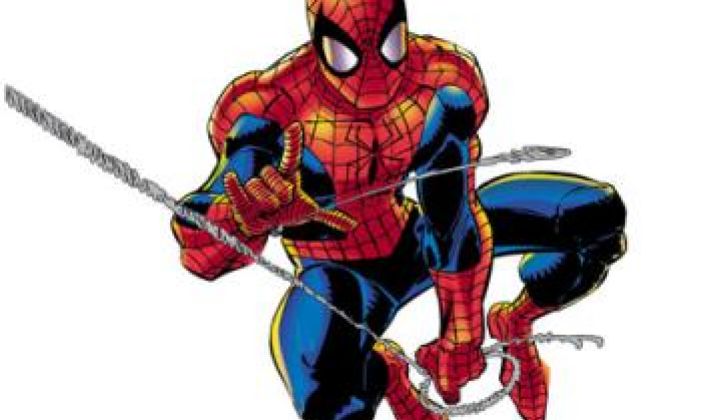As the wind industry works to cut costs and stay competitive, wind project operators need to keep their turbines in optimal condition even though most of a turbine’s 8,000 to 10,000 parts are atop a single tower the height of a football field projecting upwards into the sky. A superhero would help. Enter wind energy’s Spidermen.
“The rock stars of our company are definitely our technicians out in the field,” said Chris Bley, founder and head of business development for Rope Partner. “It’s something that’s very special. They don’t just know one thing; they know two things.”
The two things Rope Partner’s high flyers know are, first, how to use ropes and harnesses to get access to what needs fixing, and then, how to fix it. “The access part can be very complicated,” Bley said.
Deciding when and how to do their jobs can be a life-and-death decision. It could, Bley said, “be a very complicated blade repair, let’s say [as a result of] a lightning strike, and there’s a certain amount of pressure on them to get it done because the turbine owner wants to get it back on-line.”
Bley knows the job well. He did it for six years after founding Rope Partner in 2001 with German partners who, like him, were rock climbers. East German refugees, Bley’s friends had been using their skills throughout the 1990s in a successful business that included work on German wind turbines. On climbing trips, the three realized an opportunity was just budding in the U.S. wind industry, which was then ten years behind Germany.
Rope Partner now employees 45 WindCorps™ technicians, certified by the Society of Professional Rope Access Technicians (SPRAT), the most rigorous U.S. climbing authority. They provide a range of services including cleaning and maintenance, mechanical testing, servicing and retrofitting, repair of fiberglass blades and turbine parts, full turbine inspection and warranty certification and rescue.
“Initially, it was cleaning,” Bley said. “It evolved from there,” and the crews found themselves “doing more and more complicated services.” Rope access is particularly practical when scaffolding or cranes make the job otherwise too expensive.
From “probably two” customers in its first year, Rope Partner has grown to 50 employees and some 50 customers, ranging “from the manufacturers of the turbines to the owner-operators. We’ll do something as simple as cleaning one tower,” Bley said, or “we’ll inspect every single blade” in a field of turbines. “We work all over North America.”
Bley said Rope Partner was “definitely the first to do this type of work” in U.S. wind “for five to six years,” but “companies that do other kinds of rope access work such as on oil refineries or offshore oil rigs started to see a business opportunity in this industry, so they started jumping in.”
Even as it has developed a range of wind industry partnerships, including operations and maintenance service providers, Rope Partner finds itself with “two or three strong competitors in the market” such as Rope Access Technology USA, Ropeworks, and Hawk Rope Access.
Although they do many other things, the Rope Partner technicians’ rope access abilities, the know-how to dangle near a turbine’s blades or at otherwise inaccessible points, sets them apart. “Somebody trained in doing hydraulic work or electronic work or mechanical work doesn’t require the skill of hanging off of ropes.”
The WindCorps™ technicians can, Bley said “do sometimes-complicated blade repairs on cutting-edge technology in adverse conditions and on ropes.”
They use advanced, Petzl-manufactured gear and Kernmantle ropes with an internal strength core and an external protective sheath. Unlike sport climbing ropes, rope access work requires less stretch. “Always in work, you want to use a static rope,” Bley explained, “because there’s no potential fall” with the redundant, two-rope system they resolutely rely on.
Climbing technology has evolved since Bley began. “There are a lot of safety features built in. Harnesses have become more comfortable. Helmet technology has improved dramatically. When I first started working, nobody had chinstraps. Somebody could knock their helmet off and it could land on somebody below.”
Rope access work began evolving its safety practices during its formative period on North Sea offshore oil rigs. As a result, though it looks incredibly precarious, “it is known as statistically very, very safe work,” Bley said. “In the history of the company, there’s never been a death or injury caused by the work at height.”
As the market leader in a 45-gigawatt U.S. market, Rope Partner’s future looks exceptionally bright as the domestic industry progresses toward its anticipated 300-gigawatt capacity in 2030. Rope Partner is working in cutting-edge blade research with the U.S. Department of Energy’s Sandia National Laboratory and remains active in advancing SPRAT standards.
It also continues to expand and improve its own stringent training and apprenticeship programs in anticipation of work on bigger, more challenging offshore turbines. “There’s a certain challenge even on the construction side, and later on with the maintenance, to have rope access technicians as part of the team,” Bley said, “because your access methodologies get reduced dramatically with an offshore site.”
As to Rope Partner’s goals, “We’re looking to grow our company,” Bley said. “As long as we’re having fun doing what we’re doing and working with good people, it’s a great industry to be in.” OK, but to paraphrase Spiderman, life in rope access is not for the faint of heart.



